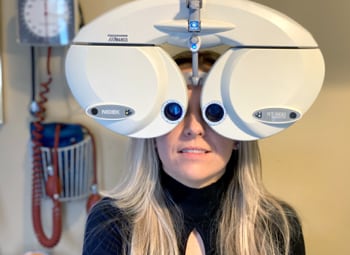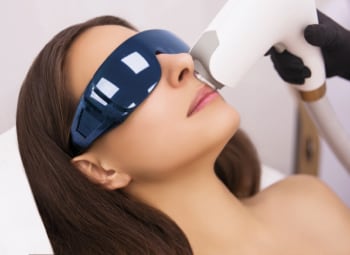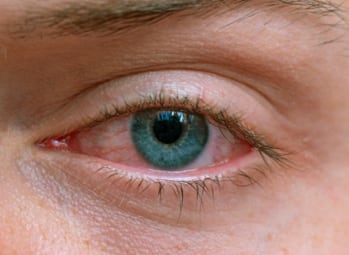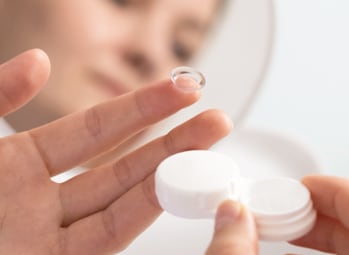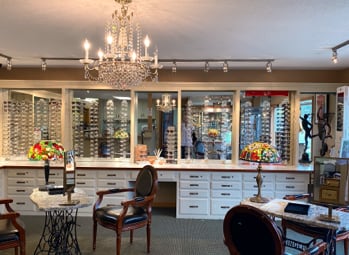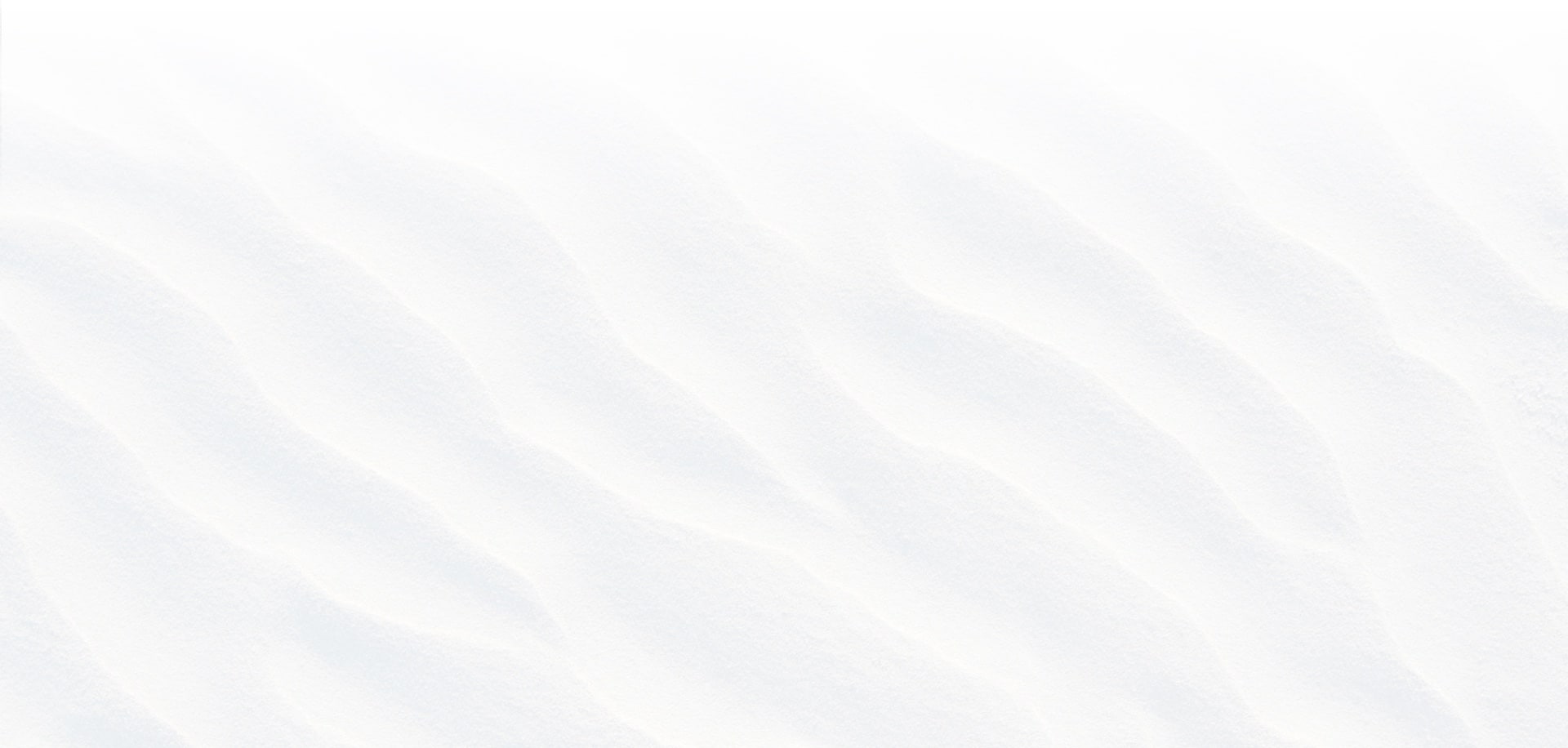
Home of the Dry Eye Treatment Center of Connecticut
For health-based solutions for uncomfortable and irritating dry eye symptoms, visit the Dry Eye Treatment Center of Connecticut at Higgins Brothers’ Vision Care.
You don’t need to live with uncomfortable vision. Simply book an appointment with our team in Plainville and discover a new definition of eye comfort today.
We also take referrals! If you’re an eye care professional and have a patient who could use our help, please visit our referral page to get in touch with us. We’re ready to provide comfortable, hydrated vision for patients from all over Connecticut!
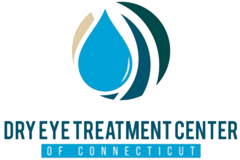
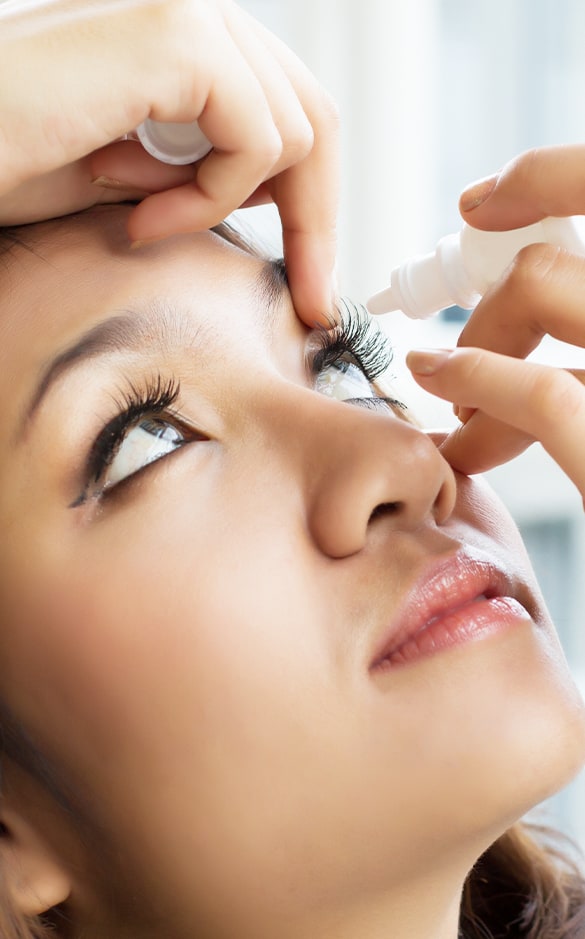
Dry Eye Affects Millions
Dry eye is becoming one of the most common eye conditions in the country. Research has shown that 6.8% of adults have dry eye disease—that’s over 16 million people struggling with chronic irritation and discomfort.
Several factors can contribute to dry eye symptoms, like digital eye strain, eye makeup, lifestyle choices, and medications, but you can find meaningful solutions for maintaining your eye comfort. Higgins Brothers’ Vision Care is committed to using the latest diagnostic and treatment technology to help bring soothing relief to your eyes.
Our Dry Eye Center customizes treatment plans using medical evidence and health-focused approaches. By getting to the root of your symptoms, we can help you enjoy long-lasting, meaningful eye comfort.

What Is Dry Eye Syndrome?
Dry eye syndrome, also known as dry eye disease or simply dry eye, is a condition that affects your tear film. Your tear film is responsible for keeping your eyes hydrated and comfortable, but various issues can compromise your tear film and lead to uncomfortable symptoms.
Several factors can increase your risk of developing dry eye syndrome, like:
- Aging
- Being female
- Vitamin A deficiency
- Laser eye surgery
- Certain medications
- Certain health conditions
Depending on what’s causing your symptoms, dry eye can affect different layers of your tear film and cause irritating symptoms. Click each title to learn more about the layers of your tear film.
The Mucus Layer
The innermost layer, mucus, is produced by the conjunctiva and is responsible for adhering the tear film to your eye and spreading it evenly across its surface.
The Water Layer
The middle water layer, produced by your lacrimal glands, helps keep your eye hydrated while washing away small particles like dust and dirt.
The Oil Layer
The oil layer, the outermost layer of your tear film, is produced by your meibomian glands. It’s responsible for sealing in your tear film and preventing it from evaporating. It also helps your eyelid glide smoothly across your eye’s surface.

Types of Dry Eye
Depending on the issue affecting your eyes, you may develop either evaporative dry eye or aqueous tear deficiency. While these two issues are different, they can cause similar symptoms like:
- Irritation
- Eye redness
- Wateriness
- Gritty sensations
- Light sensitivity
- Contact lens problems
- Blurry vision
You may have a higher risk of experiencing eye infections, inflammation, corneal damage, or corneal ulcers in more severe cases.
Evaporative Dry Eye
Evaporative dry eye occurs when your tear film isn’t getting the oil content it needs to prevent it from evaporating.
Your meibomian glands, located around the edges of your eyelids, produce the oil your tear film uses. Issues affecting the meibomian glands, for the most part, fall under a condition called meibomian gland dysfunction.
Learn more about meibomian gland dysfunction.
Aqueous Tear Deficiency
Aqueous tear deficiency occurs when your eye’s lacrimal glands don’t produce enough water content to keep your eyes hydrated. This version of dry eye isn’t as common as evaporative dry eye, but it still affects about 1 in 10 dry eye patients.
Aging can increase the risk of developing aqueous tear deficiency, but health conditions like Sjogren’s syndrome can also lead to symptoms. Doctors can determine if you have aqueous tear deficiency by using tear osmolarity tests.
Determining Your Dry Eye Severity
Diagnosing dry eye syndrome is a detailed process that requires us to take a look at your eye health, health history, and lifestyle.
We may perform several tests during your dry eye exam to better understand what may be causing your symptoms. These tests can include:
- Oculus/Crystal Report
- Tear break-up time: Measures how quickly your tears evaporate
- Tear osmolarity tests: Measures the water quality in your tear film
We may take a few different steps to determine how severe your symptoms may be and what we can do to treat them. We can individualize each treatment plan to meet your unique needs by potentially following the 4 steps outlined from the Tear Film & Ocular Surface Society Dry Eye Workshop II (TFOS DEWS II) Report.
Step 1
The first step of the TFOS DEWS II Report uses common strategies to help educate patients and manage dry eye symptoms:
- Educating the patients on dry eye symptoms, treatments, and prognosis
- Local environmental changes (like using a humidifier)
- Recommending dietary changes
- Medication assessment
- Modifying oral and topical medications
- Using lid hygiene and warm compress treatments
Step 2
If the first step doesn’t provide results, the next step is to:
- Recommend non-preservative eye lubricants
- Conserve tears using punctal plugs or tear-saving glasses or goggles
- Recommend overnight treatments (like ointments or moisture chamber devices)
- In-office eyelid heating and expression
- In-office intense pulsed light (IPL) therapy for the eyelids
- Prescribe medications to manage dry eye symptoms
Step 3
If the second step doesn’t provide results, the next step is to:
- Recommend VitalTears eye drops
- Prescribe therapeutic contact lenses
- Recommend soft bandage lenses
- Prescribe rigid scleral lenses
Step 4
The final step includes more involved procedures and treatments, like:
- Using topical corticosteroids
- Recommending amniotic membrane grafts
- Recommending surgical punctal plugs
- Recommending other surgical approaches
Meibomian Gland Dysfunction: A Leading Cause of Dry Eye
One of the leading causes of dry eye is meibomian gland dysfunction (MGD), an issue that affects the oil content in your tear film.
Meibomian glands, located around the edges of your eyelid, are responsible for producing the oils that keep your tear film from evaporating too quickly. However, various factors can affect your meibomian glands and decrease oil production, like:
- Aging
- Wearing eye makeup
- Wearing contact lenses
- Having an eye injury
- Certain medications
- Environmental stress
- Various health conditions
- Eyelash mites
- Blepharitis
Oil can also build up on your eyelid, collecting bacteria over time. Eventually, you may also develop flaky eyelids, styes, abnormal eyelash growth, and various dry eye symptoms.
There are various ways we can help manage MGD at the Dry Eye Treatment Center of Connecticut. These options can range from in-office treatments to simple eyelid hygiene practices you can do at home.
Equinox LLLT
During an Equinox Low-Level Light Treatment (LLLT) session, we use a wearable device to warm your oil-producing meibomian glands gently using light. The heat can help melt away or loosen blockages in your meibomian glands and relieve evaporative dry eye symptoms.
Learn more on our Equinox LLLT page.
LipiFlow
LipiFlow is an in-office treatment we offer to help bring relief to patients with meibomian gland dysfunction.
Using small activators that connect to your eyelids, LipiFlow gently pulsates heat to your meibomian glands, loosening blockages and providing dry eye relief.
Learn more about this treatment on our LipiFlow page.
Lumenis OptiLight IPL
We’re proud to offer Lumenis OptiLight Intense Pulsed Light (IPL) treatments for patients struggling with meibomian gland dysfunction.
Our OptiLight IPL treatment gently heats the meibomian glands using light pulsations, which can help loosen blockages along the eyelid margin.
Learn more about this treatment on our Lumenis Optilight IPL page.
OptiLIFT by Lumenis
When eyelids lose tone or your blink isn’t as strong as it should be, dry eye symptoms can become more frequent and uncomfortable. OptiLIFT by Lumenis offers a noninvasive solution that supports eyelid function while gently improving the look of tired eyes.
OptiLIFT combines radiofrequency, dynamic muscle stimulation, and microneedling for a comprehensive treatment experience.
By improving blink strength and eyelid tone, OptiLIFT helps:
- Support better tear distribution
- Enhance meibomian gland expression
- Promote a more stable, comfortable tear film
- Lift and refresh the appearance of the eyes
NuEra Radiofrequency Treatment
NuEra radiofrequency energy penetrates deep into the tissues of the eyelids and helps to restore the natural balance of oils and tears that keep the surface of the eye healthy and lubricated.
It releases clogged oil while also targeting the inflammation that makes dry eye symptoms worse.
Learn more about this treatment on our NuEra page.
Meibomian Gland Expression
We can help clear blockages in your meibomian glands by gently massaging your eyelids using various techniques. Clearing these blockages will help your tear film get the oil it needs.
BlepharoExfoliation
BlepharoExfoliation is an in-office process that cleans away dirt, debris, bacteria, and other blockages from the edges of your eyelid. BlepharoExfoliation can help manage symptoms of meibomian gland dysfunction and blepharitis.
Intraductal Probing (Maskin Probing)
For patients with severe dry eye, we may recommend intraductal meibomian gland probing. This is an advanced procedure performed in our office that can effectively clear obstructions in the meibomian glands.
Autologous Serum Eye Drops (ASEDs) and Platelet-Rich Plasma (PRP) Eye Drops
Autologous serum eye drops (ASEDs) and platelet-rich plasma (PRP) eye drops are drops custom-made from your own blood. Studies have shown they can provide better relief of symptoms for some patients.
You’ll have a small amount of blood drawn, from which we will make a supply of drops for you.
We may recommend ASEDs or PRP drops for patients with Sjögrens Syndrome, neuropathic corneal pain, or severe dry eye due to other causes.
Punctal Plugs
Punctal plugs can offer effective relief for various types of dry eye, including:
- Aqueous tear deficiency, which occurs when the lacrimal glands don’t produce enough water content.
- Evaporative dry eye, which occurs when tears evaporate too quickly from the eye’s surface.
Punctal plugs can help by preventing existing moisture from draining too quickly, helping to keep your eyes comfortable with longer-lasting surface moisture.
Nutritional & Lifestyle Counselling
Even your diet and environment can affect your tear film. We can recommend several strategies you can use to help maintain your eye comfort, like taking omega-3 fatty acid supplements, changing aspects of your office or home, or eating foods rich in certain vitamins and minerals.
Our Dry Eye Store
Our extensive online Dry Eye Store is packed to the brim with leading dry eye products that could help you restore your eye comfort. Click the link below to visit our store or give us a call to book an appointment.
Finding Comprehensive Relief
Before treating your dry eye symptoms, we first have to perform a comprehensive eye exam to understand what’s causing your symptoms and which treatment would be best for you.
Treatments range from in-office procedures to at-home strategies like dietary supplements or eyelid hygiene practices. The first step to finding relief, though, is having an eye exam.
The Path to Quality Eye Comfort Starts Here
Your eyes deserve quality comfort and care, both of which you can find at Higgins Brothers’ Vision Care in Plainville. Simply book an appointment and get back to enjoying your sight today.

Our Location
Conveniently located a short drive from the I-72 on East Main Street and Crown Street. You’ll recognize our inviting building immediately—it looks like a cozy home.
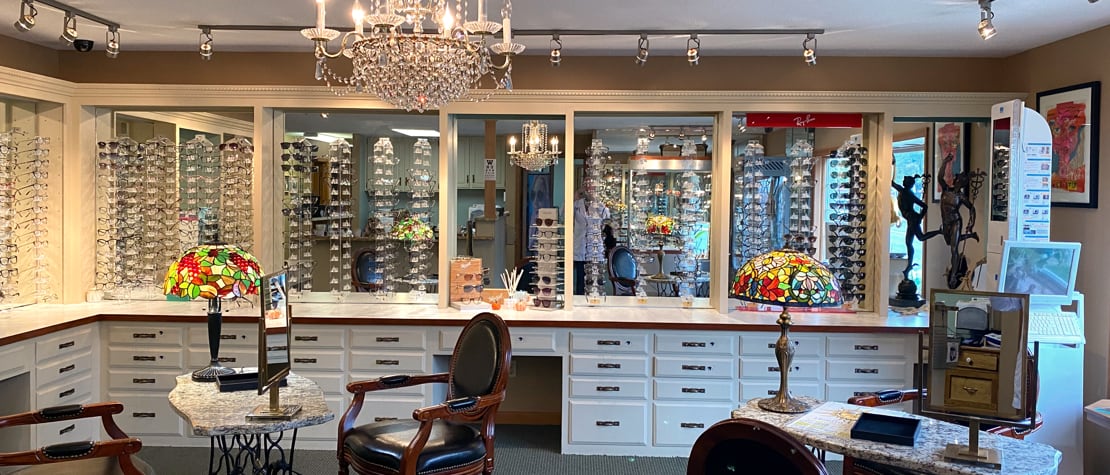
Our Address
- 74 E Main St
- Plainville, CT 06062
Contact Information
- Phone: 860-793-9613
- Email: [email protected]
In case of an eye emergency call Dr. Higgins at (860)729-4083.
Hours Of Operation
- Monday: 9:00 AM – 5:30 PM
- Tuesday: 9:00 AM – 5:30 PM
- Wednesday: 9:00 AM – 12:00 PM
- Thursday: 9:00 AM – 5:30 PM
- Friday: 9:00 AM – 12:00 PM
- Saturday: Closed
- Sunday: Closed





